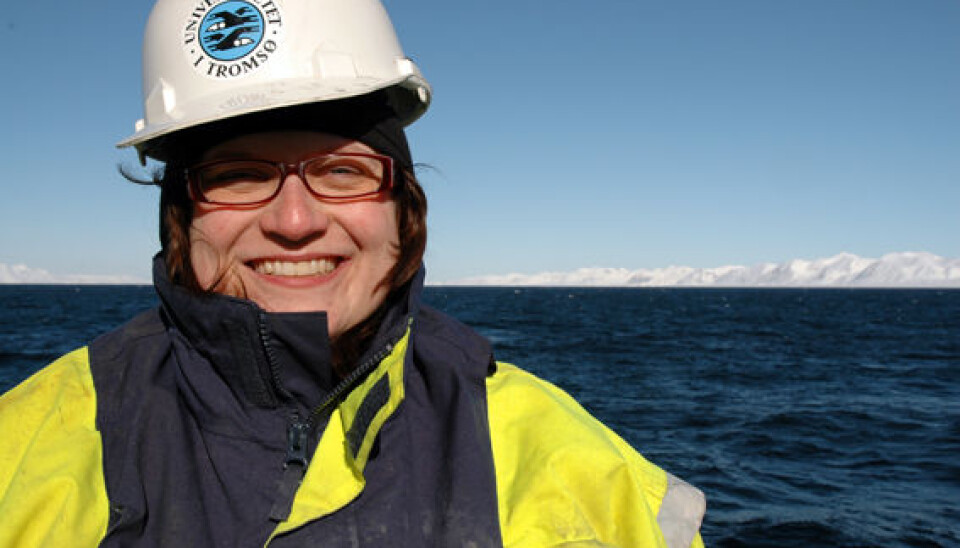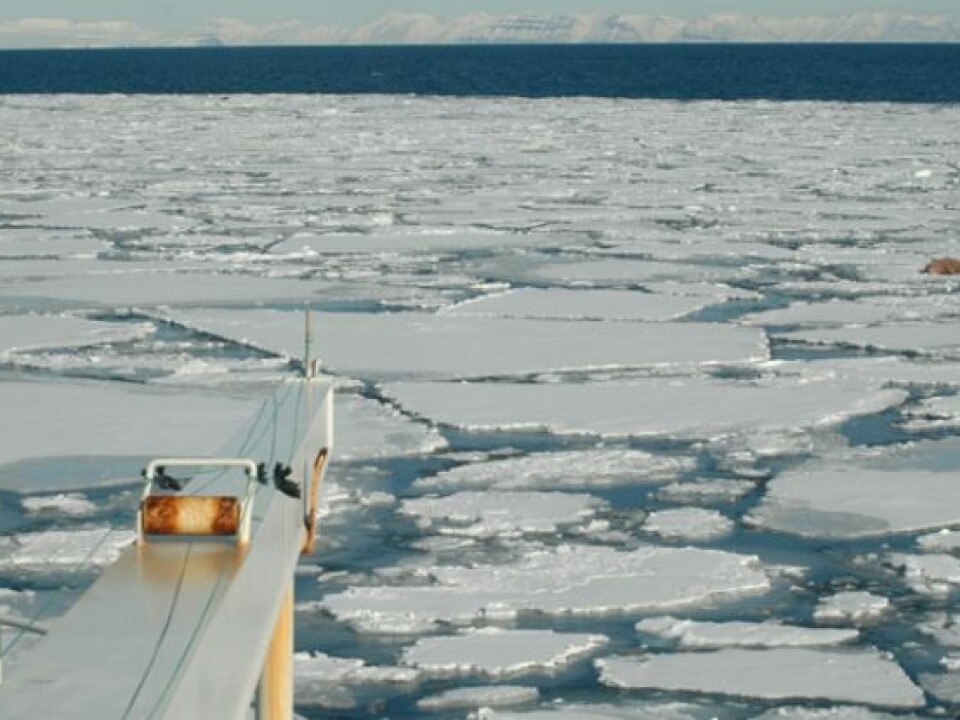An article from University of Tromsø – The Arctic University of Norway

The quest for the lost climate
Microscopic traces of fossils on the seabed can help us better understand future climate change.
Denne artikkelen er over ti år gammel og kan inneholde utdatert informasjon.
When we think of fossils, most of us think of gigantic dinosaur skeletons. However, a marine biologist will most likely think of microscopic shells, remains from recently or long dead microorganisms in the sea.
These remains fall to the seabed and contain valuable information about the climate of the past, or paleoclimate, to use the technical term.
This is what the marine biologists at the University of Tromsø and the Polar Year Project SciencePub set out to explore. New methods for reconstructing the climate of the past have been developed as a result of the research project.
Knowledge of past climate is the knowledge of naturally occurring climate change. Improved knowledge about arctic climate forms a basis for comparison which can tell us more about the current climate change caused by human activity.

Better tools needed
The clues about ancient climate patterns can be found in sediment cores from the seabed. And new cores are needed as Norwegian scientists can no longer rely on old Russian samples for analysing arctic conditions.
Because although the Arctic is a hot topic now, it hasn’t always been so, and many of the previous samples have turned into cold and useless clues.
So the researchers embarked on five missions and returned with heavy cargo holds filled to the brim with seabed sediment samples which, to the untrained eye, appear to be nothing but mud.
They have collected 40 sediment cores over the past two years.
"We are currently analysing material from 2007, and have already produced some good results,” says marine geologist Katrine Husum.
Scientists are looking at four different types of fossils, and four so-called geochemical parameters, one of which is the amount of magnesium in the shells.
“We badly needed to improve our tools. Previous methods simply weren’t good enough," she says.
Now they use computers to provide them with more precise methods of checking present day samples from the surface of the seabed. These are important for good comparisons of the climate in the past and the present.
80 centimeters - 20,000 years
A sediment sample can contain traces from the modern day and as far back as 20,000 years. This does not necessarily mean that you have to drill deep to get to the oldest traces.
Some of the sediment cores are no deeper than 80 centimetres.
According to Husum, they can retrieve from 2,000 to 20,000 years of history. It all depends on how much sediment is deposited in the sea.
"If little is deposited, the sediments will be older. In other areas, the deposits are greater. There the scientists find more information, but they cover a shorter period of time,” says Husum.
The past 2,000 years in the Fram Strait
The number of cores is not important either.
“The most important thing is to be where the action is, including movements in the sea,” says Husum.
One of the sites with the most action is the Fram Strait, where the Gulf Stream is at its most complex.
Warm, relatively salty water from the Atlantic runs through this narrow sound and into the Arctic Sea along the west coast of Spitsbergen. At the same time, cold and mostly fresh water runs out from the Arctic Sea along the east coast of Greenland.
Research fellow Katarzyna Zamelczyk has used sediments from representative locations in these two areas to investigate climate changes over the past 2,000 years. She is looking for so-called foram fossils, which are a type of plankton.
“Between 800 and 1400 AD we see a decrease in species which prefer the cold, and a slight increase in species which prefers warmth,” says Zamelczyk.
This period is also known as the Medieval Warm Period.
And Zamelczyk has found that these species follow a number of intervals: the Roman Warm Period, the Little Ice Age and not least the increased global warming of the past century.
“The sediments from the Fram Strait illustrate global, not just regional, changes,” she says.






























